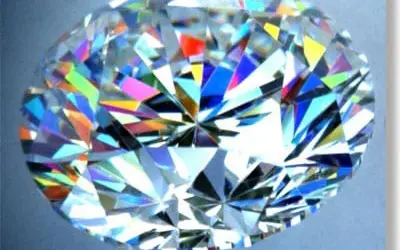Posts by Michael Cowing
Identify the Ideal by the Eye of the Diamond
Here is a surefire way to recognize Ideal cut diamonds at a glance. Learn to look for the “eye of the diamond”. The mosaic pattern of reflections in the top portion (crown and table) of a brilliant cut diamond can be subdivided into three concentric rings—each of which corresponds to a part of the eye:…
Read MoreIdeal Cut
The Ideal Brilliant Cut: Its Beginnings to Today Introduction Since its beginnings in the early 20th century to the present day, confusion and misunderstanding has frequently surrounded the use (or misuse) of the term “Ideal Round Brilliant Cut,” its defining properties and origin. Some have advocated eliminating its use altogether. Through the examination of the…
Read MoreWhat is the American Ideal Cut?
Question: What exactly is the American Ideal? Was it Americans who refined the cutting/proportioning process? The American Ideal Cut Ideal is defined as: “A standard of perfection, beauty, or excellence.” The standard of perfection and beauty in diamond cutting is embodied in the round brilliant, American Ideal cut. This concept of an ideal cut for…
Read MoreThe Central Ideal
Have you heard of the ‘American Ideal’ or ‘Tolkowsky Ideal’ in diamond cutting? How about the ‘Morse Ideal’? Michael Cowing explains that because a majority of diamonds are fashioned as 57-facet round brilliants, many are familiar the ‘Ideal’ brilliant. Through their research GIA and AGS have both found ranges of angle combinations they believe retain the finest brilliance.…
Read MoreThe Accord in Round Brilliant Diamond Cutting
Photo realistic image of today’s Ideal cut diamond Photo realistic image of the Ideal with pavilion cut in the antique style of the early 20th century Abstract: Over more than 150 years, those involved in the diamond industry have worked to establish the ideal angles and proportions to cut the facets of the standard round brilliant (srb) cut…
Read MoreOver Grading of Blue Fluorescent Diamonds Summary
Twenty-five years ago GIA published the results of a human experiment in the observation of diamonds with various amounts of blue fluorescence. An introductory editorial indicated that this study “should bring into question the trade’s lower ‘bid’ prices for moderate to highly fluorescent diamonds in the better colors”. GIA was addressing the negative publicity concerning…
Read MoreOver Grading of Blue Fluorescent Diamonds Revisited
Nineteen years ago GIA published the results of a human experiment in the observation of diamonds with various amounts of blue fluorescence. An introductory editorial indicated that this study “should bring into question the trade’s lower “bid” prices for moderate to highly fluorescent diamonds in the better colors”. GIA was addressing the negative publicity concerning…
Read MoreThe Overgrading of Blue-Fluorescent Diamonds
Michael D. Cowing FGA AGA Certified Gem Laboratory email: michaelgem@gmail.com Abstract: Decades after the establishment in the mid-twentieth century of ultraviolet-free illumination for colour grading a diamond, an examination of diamond trade and laboratory grading practices finds nearly everyone employing some type of fluorescent tube lighting containing significant ultraviolet. This paper demonstrates and quantifies the over-grading of blue-fluorescent diamonds that often…
Read MoreA Place for CZ Masters in Diamond Colour Grading
Figure 2. Complete set of GIA graded diamond masters from E through M. Over the last 20 years and despite recommendations to the contrary, many gemmologists and appraisers have gravitated to the use of cubic zirconia (CZ) master stone sets to assist in the colour grading of diamonds. This investigation revisits with new insight, diamond…
Read MoreDiamond Design and Light Performance 101
Diamond Design and Light Performance Analysis 101 . A brilliant cut diamond’s appearance is a kaleidoscopic pattern of many internal reflections (called “virtual facets”) of surrounding light sources, which are mirrored to the viewer after reflecting from the diamond’s pavilion facets. The numerous reflections from virtual facets are the fundamental elements of diamond beauty and…
Read More




